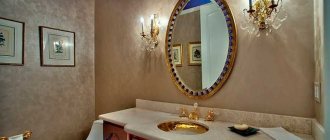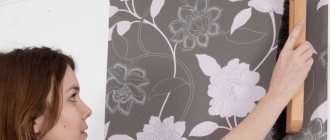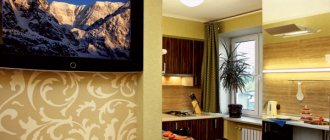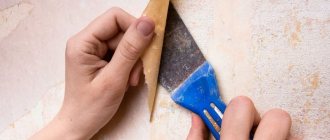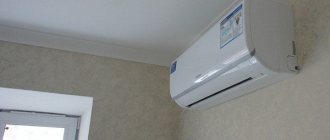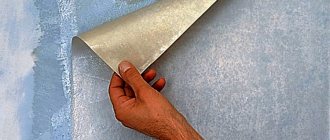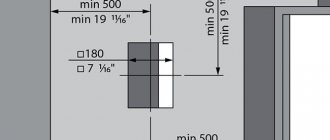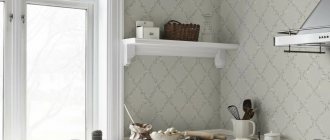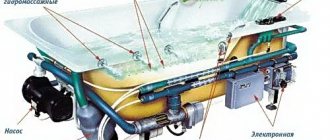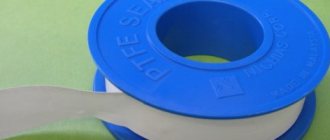In this article we will look at how to properly glue non-woven wallpaper, as well as their full classification and features. You will learn about the pros and cons of canvas, and also learn to distinguish vinyl from paper coverings. We also provided a table with symbols in the article, since manufacturers often label their products without explanation. All material is divided into three chapters.
- Before discussing what stages wallpapering is divided into, let's talk about their advantages and technical performance characteristics. Also, before starting work, you can use our development - a calculator that will allow you to calculate the number of rolls depending on the size of the room and some other factors.f
- The second chapter describes how to properly glue non-woven wallpaper with your own hands. We will analyze the features of choosing adhesive and its characteristics, as well as a step-by-step master class on applying the canvas to the walls.
- In conclusion, we will examine questions regarding the removal of coatings from the surface, care, and purchases in stores.
Pros and cons of non-woven wallpaper
Due to the use of non-woven fibers in the composition, wallpaper has the following advantages:
- keep the shape given to them when created;
- resistant to humidity;
- amenable to mechanical cleaning - cleaning and washing;
- hide small irregularities.
Thanks to the fibers, it is possible to create a durable and beautiful texture of any shape that will be waterproof - non-woven fabric does not absorb moisture.
Image of different colors, patterns and ornaments on wallpaper
The main advantage of the canvas is the ability to wash it. Non-woven wallpaper not made of paper can be washed from any contaminant that is dissolved with ordinary water or low-aggressive solvents.
We study the benefits of non-woven fabric
This coating consists of synthetic fibers and cellulose. The technology for their manufacture is very similar to paper, but they are much stronger and much easier to stick on. Why do many people prefer this for covering their home?
- They do not require special care, as they simply need to be wiped with a damp cloth to remove accumulated dirt.
- They are very resistant to damage and do not deform on their own. They do not stretch, do not form bubbles or shrink, and do not fade in the sun.
- They apply paint well, so you can easily update your boring interior.
- They take off well.
- Their material is fireproof and retains heat well.
- In stores you can find a huge number of colors and reliefs.
- Thanks to their structure, they hide small defects well.
Performance characteristics and properties
As already mentioned, non-woven wallpaper for walls has more weight. This determines the requirements for the adhesive that must be used to attach the sheets to the surface. In addition, it is necessary to take into account that the thickness of the coating and its upper layers are quite transparent - this can lead to translucency of heterogeneous plaster.
This problem does not apply to wallpaper that can be painted - a layer of paint will hide the difference in shades. But still, paints that are too light can get undesirable shades if the thickness of the paint layer is low.
Image of patterns on non-woven wallpaper
Regarding harm, we can say the following - at an average temperature of 15-30 degrees in the room, they do not emit any harmful substances. In addition, non-woven fabric is resistant to fire - even in the event of a fire, it will simply melt without burning. Performance specifications are shown in the table below.
| Characteristics | Values |
| Wallpaper width, m | 0,53/1,06 |
| Length for regular canvases for painting, m | 10,05 |
| Length for repair interlining, m | 30-50 |
| Density, g/m2 | 130-200 |
| Number of repaints | 3-10 (depending on the type of material) |
| Moisture resistance | Waterproof - super washable |
| Service life, g | 10-25 |
| Removal from surface | No leftovers |
Preparing the glue mixture
For non-woven wallpaper, preference is given to universal or special products for this type of material. Before the purchase itself, as well as mixing the glue, you need to carefully look at its compatibility with this wallpaper. This is an important point, since different types of adhesive mixtures are offered for different sizes of material.
How to mix the adhesive composition:
- Pour water at room temperature into a bucket in the proportions that you read in the instructions.
- Stir the water to form a funnel in the middle.
- Slowly add glue into the funnel, without ceasing to stir .
- Mix the mixture and leave for half an hour.
- After 30 minutes, mix the glue thoroughly again.
Prices for various types of glue for paper wallpaper
Adhesive for paper wallpaper
The mixed glue should sit for half an hour
The composition is not applied to the product - they only need to treat the top layer of the walls. However, to be more confident, you can apply the compound to the material. You need to work in a concentrated manner, especially in the summer, since the adhesive mixture quickly hardens on the surface.
Important point! Follow the instructions each time when mixing the glue. Incorrect proportions may result in a different consistency. As a result, the properties will be lost and you will not be able to work with this composition. It is also recommended to use freshly prepared composition each time.
The most convenient way to apply glue to the wall is with a lint-free roller
Classification
At the moment, the wallpapers under discussion have an excellent assortment. Available on the market:
- paper;
- vinyl;
- textile;
- for painting.
They all have their own characteristics, which will be discussed below. By the way, if you want to make the interior of your apartment special, pay attention to 3D wallpaper for the walls - no non-woven fabrics can convey the same effect.
Paper wallpaper
Non-woven paper wallpaper consists of a backing with a top textured part made of cellulose or other elements. They represent the most budget option due to cheap coverage.
| pros | ● Low cost; |
| ● A large number of varieties of colors and textures; | |
| ● Do not wrinkle or bubble after gluing; | |
| ● Easy to stick. | |
| Minuses | ● Low resistance to moisture; |
| ● Less durability; | |
| ● Demanding handling and care. |
Low stability is dictated by the considerable water absorption of paper - cellulose perfectly absorbs water, swells and loses its original shape. For this reason, you should not use this type of wallpaper in rooms with high humidity - they will quickly deteriorate.
Durability is reduced due to the low stability of the paper. Wallpaper can be easily torn off or damaged. For the same reason, you should not place canvases in those places where the greatest contact with the walls occurs - in children's rooms and hallways.
Vinyl wallpapers
Such non-woven wallpaper is a synthetic material made primarily from vinyl chloride. At its core, it is more of a soft plastic material.
Italian
| pros | ● Full resistance to damage; |
| ● Possibility of washing with any type of cleaning products; | |
| ● Possibility of repeated painting. | |
| Minuses | ● High weight; |
| ● Demanding about the evenness of the walls; | |
| ● High cost. |
In addition to its usual properties, the canvas allows for extremely long-term use - it can easily withstand dozens of painting cycles, which allows you to change the appearance of the room at any time.
By the way, if you want to experiment with the appearance, try hanging photo wallpaper in the kitchen, expanding the space - there is a separate article on this topic on our website.
The weight increases due to the use of vinyl, which requires a stronger adhesive that will prevent the wallpaper from falling off due to the weight. All significant irregularities will be very clearly visible due to the texture.
The cost is dictated by the very high complexity of manufacturing and the cost of the materials themselves. It will be quite expensive to cover a large room with walls.
Textile wallpaper
Non-woven textile wallpaper is a multi-layer material. They can be either in the form of a single sheet or as individual pieces or fibers, similar to fiber plaster.
| pros | ● very beautiful appearance; |
| ● pleasant to the touch texture; | |
| ● the ability to create a unique design. | |
| Minuses | ● low resistance to damage; |
| ● good moisture absorption; | |
| ● demands on the surface. |
Low durability depends on the type of coating used. For example, fiber, with partial application, will be much stronger than fully textile fabric. All types of textiles absorb moisture, except water-resistant ones, for example, those with synthetic fibers.
Best used in areas where the surface will not be exposed to much exposure.
Wallpaper for painting
Paintable wallpaper with a non-woven base has many advantages. In essence, they are neutral-colored canvases made from easily dyed substances. The main advantage is the reusability of the canvas.
If you doubt whether your non-woven wallpaper can be painted, contact a specialist; you should not make hasty conclusions.
The easiest way to paint is with various water-based paints - they are perfectly absorbed and do not harm the material. It is better to glue with waterproof adhesives that will not fail even if paint gets under the base.
If for some reason you do not want to use non-woven fabrics for painting, pay attention to glass wallpaper for painting. Photos of the interior, recommendations and features are presented in a special material on this topic.
Introduction
This coating looks expensive and impressive
Wallpaper is one of the most popular and inexpensive ways to decorate walls in residential areas. There are hundreds of textures, colors, prints and sizes on sale. They allow you to transform a room in a matter of hours, radically change its “appearance”, and create a unique interior in the chosen style.
All wallpapers are divided into two large subgroups: paper and vinyl. We are talking about a substrate on which a decorative layer is applied. It is its quality and physical characteristics that are responsible for the ability of the finishing material to adhere to a vertical surface.
We also advise you to look towards other products, such as photo wallpaper. This type is now in trend and there are a huge number of design solutions on the market.
Selection of non-woven wallpaper for walls depending on the type of room
Despite its high strength, non-woven wallpaper for walls is not equally suitable for all rooms. You need to start from:
| Temperature | Temperature conditions affect how long the wallpaper will last - for example, exposure to direct sunlight can lead to very rapid fading, and severe frosts will lead to destruction and cracking of the non-woven base. | |
| Frequent contact | It is better not to place textile or paper coverings in places where they can be accidentally touched - for example, in children's rooms and hallways. Also, they should not be placed next to sinks and cooking surfaces. | |
| Humidity level | Humidity affects the possibility of using different types of non-woven fabrics - for example, in rooms with high humidity it is better not to use wallpaper with a paper or textile coating. |
The best solution for placing them is the living room. Such wallpaper for the living room (photo in the apartment at the link) allows you to create a wonderful image of the room due to a considerable number of different textures, colors and patterns.
How to properly glue non-woven wallpaper with your own hands
The master class presented in this chapter will tell you how to properly glue non-woven wallpaper with your own hands. The only distinctive feature is the use of glue, which is produced specifically for this type of wall covering.
Preparing walls for gluing
Preparing the surface for gluing non-woven wallpaper should begin with leveling it. Although the linens can hide small dimples, they will not correct serious imperfections. First, the surface must be puttied and sanded.
When gluing wallpaper on a non-woven basis, you should not pay too much attention to sanding - the material lays out as a fairly dense, even canvas that can hide small pits. It will be more important to remove all serious bulges - especially if you decide to use wallpaper with a geometric pattern. The differences will be very visible.
Before gluing, the putty and all other layers must dry - otherwise, the coating will begin to fall off after gluing.
Additional tools
As already noted, the main advantage of non-woven wallpaper is that it is not necessary to apply glue to it. This means that the process does not require a large room to place long strips of material on the floor to process them.
In order to wallpaper a room, you need to immediately find all the tools necessary for this, so as not to look for them later. You may need the following items:
- the canvas itself and the glue that suits it;
- building level;
- two small containers, in one of which you will knead the adhesive composition, and in the other you will hold water;
- metal spatula and roller;
- a plastic spatula and a brush with which you will apply the adhesive;
- tape measure, pencil, stationery knife;
- foam sponge, sandpaper;
- starting and finishing putty, sickle mesh, primer;
- paint (if you will be covering the canvas on top).
Listed above are not only tools for gluing wallpaper, but also materials for preparing walls for decoration. You will also need plinths or plaster corners, polyurethane foam, and polystyrene foam for the final processing of the walls. This will make the renovation complete and aesthetically pleasing.
Set of accessories for working with wallpaper
How to care for non-woven wallpaper?
The method of care depends on the specific wallpaper material chosen. Care depends on the waterproofness of the fabric; this is indicated on the packaging in the form of waves or droplets of water.
- Paper should be cared for like regular wallpaper - despite its water resistance, cellulose quickly absorbs water. For them, the best solution is dry cleaning with a soft brush. If your fabrics are highly waterproof, you can use a wet cloth.
- Non-woven wallpaper can be easily washed with water, then wiped with a dry cloth, and you can also use low-aggressive substances - for example, soap. They are completely waterproof.
- Textile fabric requires both protection from mechanical and chemical influences. Depending on the type of textile, you must follow the recommendations for its care. Waterproof textiles are best cleaned with water and a soft sponge. It is better not to clean textiles made from water-permeable fibers - they will lose their appearance.
Product Features
Before choosing, you must take into account a number of features that will allow you to understand how high-quality the composition you are using:
- when stirring the glue there should be no clots or lumps;
- storage in packaging can reach a very long time;
- high-quality products protect against the formation of fungus and mold;
- it must be safe for health;
- The preparation process is indicated on the package and even a beginner can perform it.
If the glue has all these characteristics, then most likely you are buying a quality product. Preparation of the solution takes no more than 10 minutes.
How to remove non-woven wallpaper from walls?
To remove non-woven wallpaper from the walls, you first need to cut it. It is required to make horizontal cuts over the entire area. After this, a large amount of warm soapy water is applied to the canvas.
As soon as the wallpaper is completely saturated with water, you need to start peeling it off with a spatula. If they are well wet, they will come off without tearing.
If you use waterproof glue, for example, for wallpaper under water-based paints, you should soak it with plenty of water.
Voting for the best adhesive for vinyl wallpaper
What adhesive would you choose or recommend for vinyl wallpaper?
Semin Sem Vinyl
0.00 % ( 0 )
"Snowflake -3" Melate
25.00 % ( 1 )
Kiilto Master Pro
0.00 % ( 0 )
Lacra vinyl
0.00 % ( 0 )
KLEO total
0.00 % ( 0 )
Moment Vinyl
0.00 % ( 0 )
Axton vinyl
0.00 % ( 0 )
Quelid vinyl indicator
0.00 % ( 0 )
Quelid special interlining
25.00 % ( 1 )
PUFAS Euro 3000
25.00 % ( 1 )
Tytan Euro line vinyl with indicator
0.00 % ( 0 )
Metylan
0.00 % ( 0 )
What to look for when purchasing
When purchasing, you should pay attention to the following factors:
| 1 | Material of manufacture | The material of manufacture affects both the use of wallpaper and the location. Vinyl ones are perfect for places with heavy mechanical load; the rest are better placed in places where there will be less load and contact. |
| 2 | Glue requirements | Requirements for glue are sometimes indicated on the packaging. It is not necessary to purchase it from the exact brand recommended by the manufacturer - in fact, they rarely differ in special properties and most often are a common overpayment for the brand. |
| 3 | Roll width | Width affects ease of use. A narrow one is more convenient in rooms with a large number of corners and narrow elements - radiators and pipes. Wide is more suitable for large rooms with straight walls. |
| 4 | Quality | It is also worth paying attention to quality. Since non-woven wallpaper has a multi-layer structure, the edges should not “delaminate”. It is also necessary to check whether all rolls belong to the same batch. This is extremely important for dark canvases - the shade may differ between different batches, which will be extremely noticeable |
Pasting difficult areas
There are places in every room that cause some inconvenience when decorating with wallpaper. These are corners (and they are often uneven), door and window openings, niches or arches.
How to properly glue meter-long non-woven wallpaper on difficult areas of walls and ceilings:
- Internal corners. Measure the width of the strip from the edge of the previous fabric to the inner corner, add 1 cm for the allowance. Spread the corner with glue and glue the strip, grabbing part of the adjacent wall and turning the edge 1 cm. The canvas is leveled and the excess is cut off. The second part of the corner is glued using the same principle. The wallpaper is cut vertically so as not to touch the bottom strip. The edges are aligned and after drying, an invisible joint is obtained.
2. Door or window opening. If you use plain wallpaper or copies without selecting a pattern, gluing them is easier, since you can skip the area above the doorway and then cover it with small fragments. When the wallpaper is made of vinyl on non-woven fabric with a pronounced pattern, the pattern will have to be combined immediately, without missing the area above the door or under the window. The strip is carefully measured, a place for a window/door is cut out in it, and glued to the wall, matching the ornament.
3. “Recessed” or unfolded corner. If such an area in the room is located in a visible place and attracts attention, overlap cannot be done. How to properly glue vinyl wallpaper on a non-woven base in this case? The strip is placed on the adjacent wall by 2 cm, but the overlap will not be the same. At the narrowest point of the overlap, step back 1 cm from the edge to the corner, then measure the width of the roll from this point and draw a vertical line. The overlap in an uneven corner will be approximately 1 cm, but will not be very noticeable.
Some craftsmen use the double cutting method when gluing uneven corners. How to glue meter-long non-woven wallpaper in this case: stick two strips with a large overlap of 5 cm, pressing them firmly into the corner; Using a rigid profile, the wallpaper is cut vertically in the center of the corner, the excess is removed, the edges of the strips are smeared with glue and ironed with a roller.
On a note! In places where sockets and switches are installed, wallpaper is glued as usual, but the location of electrical devices is marked with a cross. Cuts are made along the marked lines, the wallpaper is folded inward, and after the glue has dried, the boxes are mounted in their original place.
Where to buy and at what price?
You need to buy non-woven wallpaper from a trusted place - do not go to small stores that charge a large markup and offer low-quality goods. Wholesale centers and large federal chains are a good solution.
Also, if you need a wide catalog, you can contact large specialized stores. As a rule, they will be able to advise you or even help you make a custom drawing. We advise you to choose between Italy and Germany - these are the highest quality producers of such canvases.
The price of non-woven wallpaper in Moscow or the regions currently ranges from 500 rubles to 10,000, depending on the coating and pattern. Narrow rolls are one and a half to two times cheaper due to their smaller volume, but there are exceptions.
To see the most popular wallpaper options, go to any popular online store and sort by popularity using a filter in the catalog. So you will select the canvases that suit you in terms of price-quality ratio.
Preparing the necessary material
Before starting repairs, you need to calculate the number of rolls. Finishing materials today are not cheap, so it is better to carefully calculate the required volume than to overpay for extra meters. When choosing wallpaper, you should pay attention to the length of the roll. It can be 10, 15 and 20 m. In addition, it is necessary to ensure that all packages have the same batch number and the same pattern.
The walls of the room must be measured in length and height. For clarity, you can draw a detailed plan of the room and put down the dimensions. Dividing the length of the roll by the height of the wall, you get the number of rolls required for finishing. To ensure there is enough wallpaper to cover the space under radiators, above window openings and doors, buy another roll. Canvases with large images should be taken with the reserve necessary for selecting a design.
In addition to wallpaper, you should stock up on:
- primer for treating plastered surfaces;
- two rollers: for applying glue and for rolling walls;
- a soft brush for coating corners and other hard-to-reach places;
- scissors;
- pencil or marker;
- laser or regular level;
- plumb line and spatula;
- container for diluting glue;
- glue.
Usually wallpaper is measured and cut on the floor. In order not to spoil the front side, it is better to carry out this work on plastic film.

